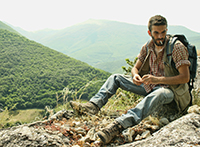 Paolo Citton. Dipartimento di Scienze della Terra, “Sapienza” Università di Roma, Piazzale Aldo Moro 5, 00185, Rome, Italy. paolo.citton@uniroma1.it
Paolo Citton. Dipartimento di Scienze della Terra, “Sapienza” Università di Roma, Piazzale Aldo Moro 5, 00185, Rome, Italy. paolo.citton@uniroma1.it
Dr. Paolo Citton started working in the Department of Earth Sciences as an undergraduate at Sapienza University of Rome. He completed his PhD at the same institution in 2014. His research is geared on Permian and Mesozoic footprints (synapsids and dinosaurs trackmakers) from Europe and North America, and it also currently implies the analysis and study of the dynamics of track formation on different types of substrate.

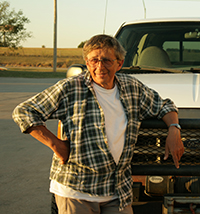 Umberto Nicosia. Dipartimento di Scienze della Terra, “Sapienza” Università di Roma, Piazzale Aldo Moro 5, 00185, Rome, Italy. umberto.nicosia@uniroma1.it
Umberto Nicosia. Dipartimento di Scienze della Terra, “Sapienza” Università di Roma, Piazzale Aldo Moro 5, 00185, Rome, Italy. umberto.nicosia@uniroma1.it
Umberto Nicosia works as professor of Paleontology at the Department of Earth Sciences and he was the Director of the Paleontological Museum of the Sapienza Università di Roma and of the Earth Sciences Department. His scientific activity covers several fields of Mesozoic geology and paleontology. Since 1975 he has been studying Jurassic successions in Italy, Albania, Turkey, England, Germany and France. Its main research field concerns systematics and palaeobiogeography of dinosaurs and of Paleozoic and Mesozoic tetrapod footprints. He is also especially interested in evolution of articulate crinoids. The number of his publications in these topics exceeds 70.

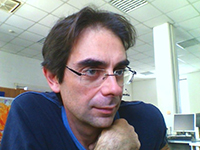 Iacopo Nicolosi. Istituto Nazionale di Geofisica e Vulcanologia, Via di Vigna Murata 605, 00143 Roma, Italy. iacopo.nicolosi@ingv.it
Iacopo Nicolosi. Istituto Nazionale di Geofisica e Vulcanologia, Via di Vigna Murata 605, 00143 Roma, Italy. iacopo.nicolosi@ingv.it
Dr. Iacopo Nicolosi is currently a research fellow at the Italian National Institute for Gephysics and Volcanology. After an Earth Science degree at Pisa University (Italy), he completed his PhD in Geophysics at Bologna University (Italy) in 2005. His main research is focused on near surface geophysics and crustal modelling and interpretation of magnetic anomaly measures, especially on volcanic and tectonic environments. In the last years, his research has been focused on application of the structure from motion (SfM) technique (the process of estimating three-dimensional structures from two-dimensional image sequences) to the digital reconstruction of Earth surfaces models, rock outcrops, impact structures, archaeological edifices, excavations and artifacts, dinosaur footprints and tracks and other ichnological structures.

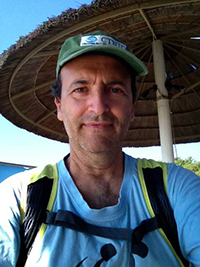 Roberto Carluccio. Istituto Nazionale di Geofisica e Vulcanologia, Via di Vigna Murata 605, 00143 Roma, Italy. roberto.carluccio@ingv.it
Roberto Carluccio. Istituto Nazionale di Geofisica e Vulcanologia, Via di Vigna Murata 605, 00143 Roma, Italy. roberto.carluccio@ingv.it
Roberto Carluccio, Degree in Physics in 1989. Research experience in various research institutes on different topics: nanotechnologies, solid state electronics and semiconductor spectroscopy techniques. From early 2004 on he is part of INGV (National Institute of Geophysics and Volcanology) Geomagnetism and Aeronomy group, participating to many geophisical airborne and ground based measurements campaigns. Parallel to this activity is the work on software applications development and scientifical data processing: data decoding systems, acquisition and elaboration of geodata from worldwide netwoks, expert systems and AI techniques for knowledge management, events alerts and discrimination, immersive augmented and virtual reality environment development. In latest years works on UAV systems development, remote sensing techniques and photogrammetric 3D surface reconstruction and measurements from digital photo sequences. http://www.researchgate.net/profile/Roberto_Carluccio.

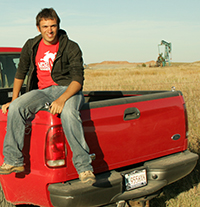 Marco Romano. Dipartimento di Scienze della Terra, “Sapienza” Università di Roma, Piazzale Aldo Moro 5, 00185, Rome, Italy; Sam Noble Museum, 2401 Chautauqua Ave., Norman, Oklahoma 73072, USA. marco.romano@uniroma1.it (corresponding author)
Marco Romano. Dipartimento di Scienze della Terra, “Sapienza” Università di Roma, Piazzale Aldo Moro 5, 00185, Rome, Italy; Sam Noble Museum, 2401 Chautauqua Ave., Norman, Oklahoma 73072, USA. marco.romano@uniroma1.it (corresponding author)
Marco Romano received his PhD in Earth Science (vertebrate paleontology) from the Sapienza, University of Rome Italy, working on the phylogeny of basal synapsids (Family Caseidae, Casesauria, Synapsida). From 2012 he is Research Associate in Vertebrate Paleontology at the Sam Noble Museum (Norman, Oklahoma). He has a very broad research interest in evolutionary biology and vertebrate paleontology, combining several modern and quantitative approaches (osteology, functional morphology, morphometry, ichnology, biomechanics, ethology, myology, "in vivo" restoration and body mass estimate) in order to obtain a better, and as much as possible multidisciplinary and holistic knowledge of some key points in the evolution of terrestrial tetrapods. He also conduct research in philosophy and history of science (especially in the early development of paleontology and geology) analyzing the onset, and evolution in time, of fundamental concepts for Earth Sciences. In this framework is an active member of the "Geoitaliani Project", a section of the Italian Geological Society whose mission is to analyze and disseminate the great contribution of Italian scientists to the early advancement of knowledge in geology and paleontology.


